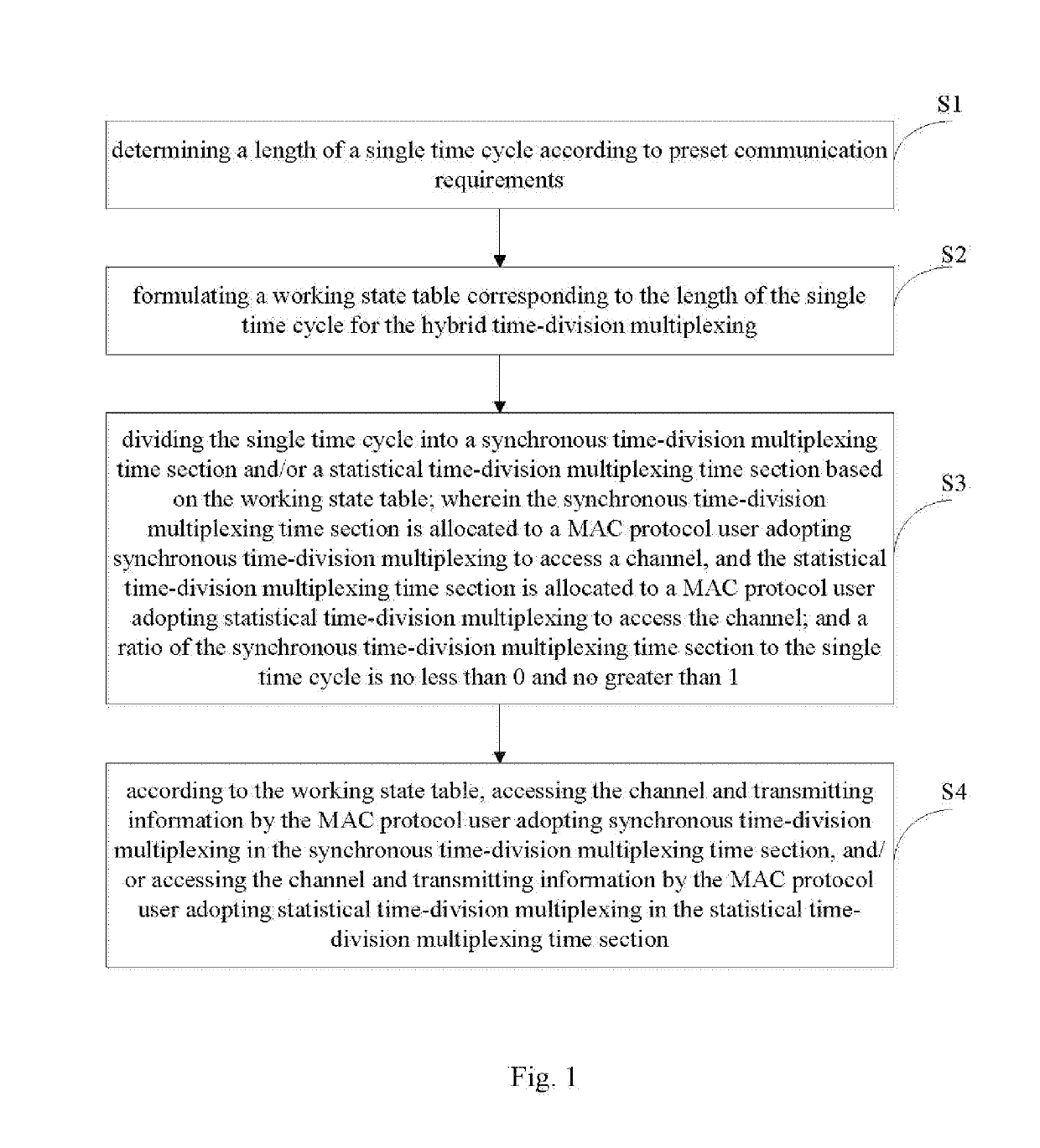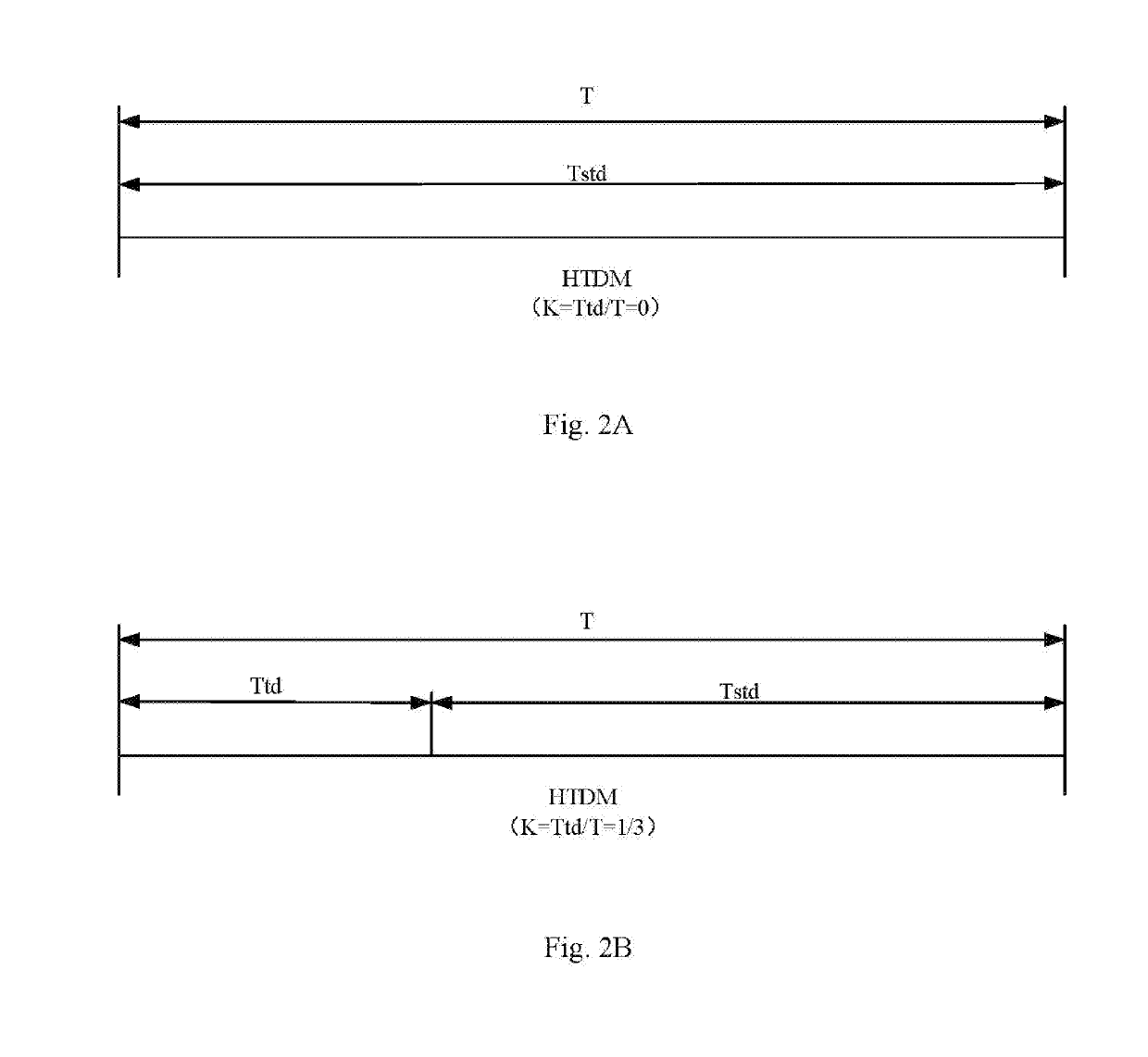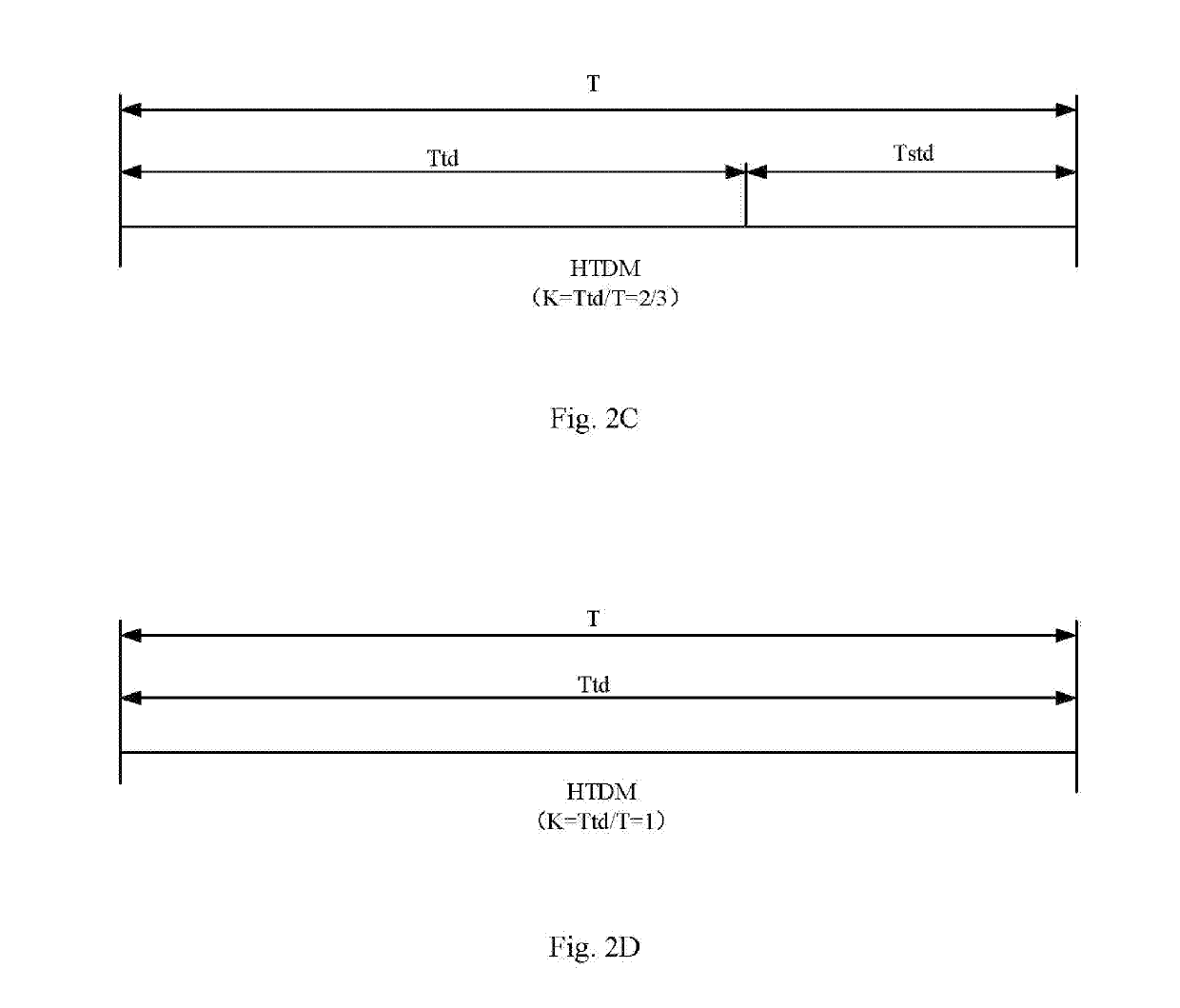Hiybrd time-division multiplexing
a time-division multiplexing and hybrid technology, applied in the field of wireless communication, can solve the problems of low usage rate of channel and device, complex technology, and need for complex addressing and controlling technology, and achieve the effect of high channel usage rate and high channel usage rate in communication
- Summary
- Abstract
- Description
- Claims
- Application Information
AI Technical Summary
Benefits of technology
Problems solved by technology
Method used
Image
Examples
embodiment one
[0038]Referring to FIG. 1 and FIG. 2A to FIG. 2D, the present embodiments discloses a hybrid time-division multiplexing (HTDM), and the process of this method comprises:
[0039]S1, determining a length T of a single time cycle according to preset communication requirements;
[0040]S2, formulating a working state table corresponding to the length T of the single time cycle for the HTDM;
[0041]S3, dividing the single time cycle into a synchronous time-division multiplexing time section Ttd and / or a statistical time-division multiplexing time section Tstd based on the working state table; wherein the synchronous time-division multiplexing time section Ttd is allocated to a MAC protocol user adopting synchronous time-division multiplexing (TDM) to access a channel, and the statistical time-division multiplexing time section Tstd is allocated to a MAC protocol user adopting statistical time-division multiplexing (STDM) to access the channel; and a ratio K of the synchronous time-division mult...
PUM
 Login to View More
Login to View More Abstract
Description
Claims
Application Information
 Login to View More
Login to View More - R&D
- Intellectual Property
- Life Sciences
- Materials
- Tech Scout
- Unparalleled Data Quality
- Higher Quality Content
- 60% Fewer Hallucinations
Browse by: Latest US Patents, China's latest patents, Technical Efficacy Thesaurus, Application Domain, Technology Topic, Popular Technical Reports.
© 2025 PatSnap. All rights reserved.Legal|Privacy policy|Modern Slavery Act Transparency Statement|Sitemap|About US| Contact US: help@patsnap.com



